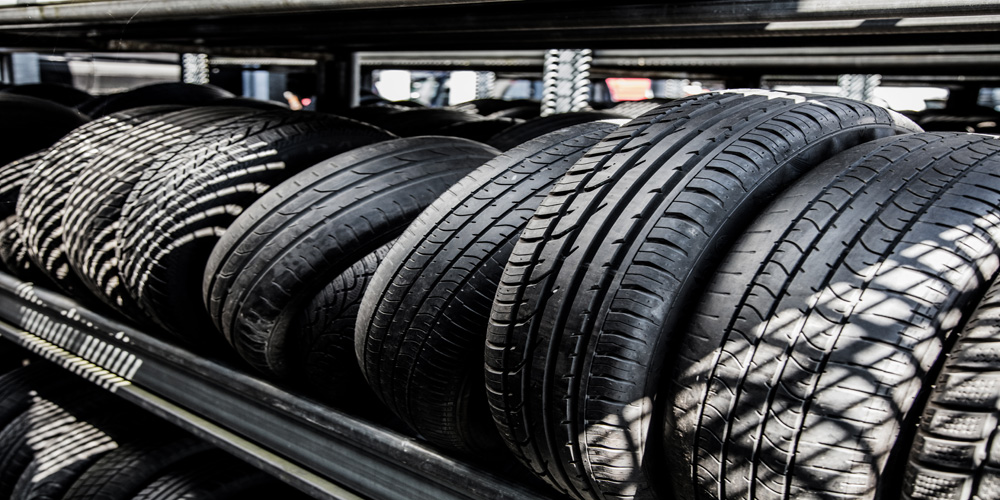Vehicle Breaking and Recycling & Sacriston Auto Dismantlers
As the world becomes evermore environmental aware, the automotive industry is under increasing scrutiny for its environmental impact. From the manufacturing process to end-of-life disposal, vehicles contribute significantly to environmental degradation. However, the process of vehicle breaking and recycling presents a valuable opportunity to mitigate these effects. Sacriston Auto Dismantlers, located in Durham, serves as an exemplary model in this field, providing a sustainable and efficient solution to vehicle recycling.
This post delves into the importance of vehicle breaking and recycling, the processes involved, the role of companies like Sacriston Auto Dismantlers, and the environmental and economic benefits of these practices.
The Importance of Vehicle Breaking and Recycling
Vehicles, when they reach the end of their life, pose significant environmental hazards if not properly disposed of. The materials used in vehicles—such as metals, plastics, rubber, and hazardous fluids—can cause pollution and contribute to the growing problem of waste. Vehicle breaking and recycling is crucial for several reasons:
- Environmental Protection: Proper recycling prevents harmful materials from being released into the environment. Hazardous substances like oil, coolant, and battery acid can contaminate soil and water if not handled correctly.
- Resource Conservation: Vehicles contain a large amount of recyclable materials, including metals like steel, aluminum, and copper. Recycling these materials conserves natural resources and reduces the need for mining and processing new raw materials, which are energy-intensive and environmentally damaging.
- Energy Savings: Recycling metals from vehicles uses significantly less energy compared to producing new metals from raw ores. For example, recycling steel saves about 74% of the energy required to produce it from iron ore.
- Reduction of Waste: Vehicle recycling reduces the volume of waste sent to landfills. As landfills reach capacity, reducing the amount of waste becomes increasingly important. By recycling vehicles, large volumes of waste are diverted from landfills.
- Economic Benefits: The vehicle recycling industry generates economic value through the sale of recycled materials and parts. It also creates jobs and supports local economies.
The Vehicle Breaking Process
Vehicle breaking, also known as vehicle dismantling or depollution, involves several steps to ensure that the vehicle is safely and efficiently recycled. Sacriston Auto Dismantlers follows a meticulous process to maximize the recovery of reusable parts and materials while minimizing environmental impact.
- Vehicle Assessment: The first step in the vehicle breaking process is assessing the condition of the vehicle. This involves checking for any remaining valuable parts that can be salvaged and reused or resold. Parts like engines, transmissions, catalytic converters, and electronics are often in demand in the used auto parts market.
- Depollution: Before dismantling the vehicle, hazardous materials are safely removed. This includes draining and disposing of fluids such as oil, coolant, brake fluid, and gasoline. Batteries are also removed and handled separately due to their toxic contents.
- Dismantling: After depollution, the vehicle is dismantled. Parts that can be reused are carefully removed and inspected for quality. Reusable parts are then cleaned, tested, and prepared for resale. This step not only provides affordable parts for vehicle owners but also reduces the demand for new parts, conserving resources.
- Scrapping and Shredding: Once all valuable parts are removed, the remaining structure, mainly the metal body, is sent to be scrapped and shredded. The metal is then sorted and sent to recycling facilities where it can be melted down and reused in new products.
- Recycling Non-Metal Materials: Beyond metals, other materials like plastics, rubber, and glass are also recycled. Tires, for example, can be repurposed into rubberized asphalt for road construction or used in playground surfaces. Plastics can be recycled into new automotive components or other plastic products.
- Disposal of Non-Recyclable Materials: Some materials cannot be recycled due to contamination or other factors. These materials are disposed of in compliance with environmental regulations to minimize harm to the environment.
Sacriston Auto Dismantlers: A Case Study in Sustainability
Sacriston Auto Dismantlers, located in Durham, has been a pioneer in the vehicle dismantling and recycling industry. With a strong commitment to environmental responsibility, the company has developed efficient processes to ensure that as much of each vehicle as possible is reused or recycled.
- Commitment to Environmental Standards: Sacriston Auto Dismantlers adheres to strict environmental standards in its operations. The company is licensed and regulated by the Environment Agency, ensuring that all dismantling and recycling activities meet legal requirements and minimize environmental impact.
- Advanced Depollution Techniques: The company uses advanced depollution techniques to safely remove hazardous materials from vehicles. This not only protects the environment but also ensures the safety of workers involved in the dismantling process.
- Extensive Parts Inventory: Sacriston Auto Dismantlers maintains an extensive inventory of quality used auto parts. By offering these parts to consumers, the company provides an affordable alternative to new parts, supporting sustainability by extending the life of existing vehicles and reducing the demand for new manufacturing.
- Community Engagement: Sacriston Auto Dismantlers is deeply rooted in the local community. The company provides jobs and supports the local economy while also educating the public about the importance of recycling and sustainability. Through partnerships with local businesses and participation in environmental initiatives, Sacriston Auto Dismantlers plays a key role in promoting sustainable practices in Durham.
- Continuous Improvement: The company is committed to continuous improvement in its operations. This includes investing in new technologies and processes to increase efficiency, reduce waste, and enhance the quality of recycled materials. By staying at the forefront of industry developments, Sacriston Auto Dismantlers ensures that it continues to lead in environmental stewardship.
The Broader Impact of Vehicle Recycling
The efforts of companies like Sacriston Auto Dismantlers have far-reaching implications for both the environment and the economy. The broader impact of vehicle recycling includes:
- Reducing Greenhouse Gas Emissions: Recycling metals significantly reduces greenhouse gas emissions compared to producing metals from raw materials. For example, recycling steel reduces CO2 emissions by up to 58%. This contributes to the global effort to combat climate change.
- Conserving Natural Resources: By recycling materials from vehicles, the demand for virgin materials is reduced. This helps conserve natural resources like iron ore, bauxite (for aluminum), and petroleum (for plastics), which are finite and often involve environmentally destructive extraction processes.
- Energy Conservation: The energy savings from recycling are substantial. For example, recycling aluminum saves up to 95% of the energy required to produce it from raw materials. This not only reduces energy consumption but also decreases the environmental impact associated with energy production, such as pollution and habitat destruction.
- Economic Growth: The vehicle recycling industry supports economic growth by creating jobs in dismantling, recycling, and parts resale. It also provides affordable parts to consumers, which can help reduce the cost of vehicle ownership and maintenance.
- Reducing Waste and Landfill Pressure: Vehicle recycling reduces the volume of waste sent to landfills, which is critical as landfill space becomes increasingly limited. This also reduces the environmental impact associated with landfill operations, such as methane emissions and groundwater contamination.
Challenges and Future Directions
While vehicle recycling has made significant strides, challenges remain. These include:
- Complexity of Modern Vehicles: As vehicles become more complex with advanced electronics and composite materials, the recycling process becomes more challenging. New techniques and technologies are needed to efficiently recycle these materials.
- Market Fluctuations: The market for recycled materials can be volatile, affecting the profitability of recycling operations. Economic downturns, fluctuations in commodity prices, and changes in demand for recycled materials can impact the industry.
- Regulatory Compliance: Keeping up with changing environmental regulations can be challenging for vehicle recyclers. Ensuring compliance while maintaining profitability requires continuous adaptation and investment in new processes and technologies.
- Consumer Awareness: Increasing consumer awareness about the benefits of vehicle recycling is crucial. Many vehicle owners are unaware of the options available for recycling their old vehicles or the environmental impact of improper disposal.
To address these challenges, the industry must continue to innovate and adapt. This includes developing new recycling technologies, improving the efficiency of existing processes, and increasing public awareness about the importance of recycling.
Vehicle Breaking and Recycling
Vehicle breaking and recycling is an essential part of the automotive lifecycle that offers significant environmental and economic benefits. Companies like Sacriston Auto Dismantlers play a vital role in ensuring that vehicles are recycled responsibly and efficiently, minimizing environmental impact and supporting sustainable practices.
As the automotive industry continues to evolve, the importance of recycling will only grow. By investing in new technologies, adhering to environmental standards, and engaging with the community, companies like Sacriston Auto Dismantlers will continue to lead the way in promoting sustainability in the automotive sector. Through these efforts, we can reduce waste, conserve resources, and protect the environment for future generations.



